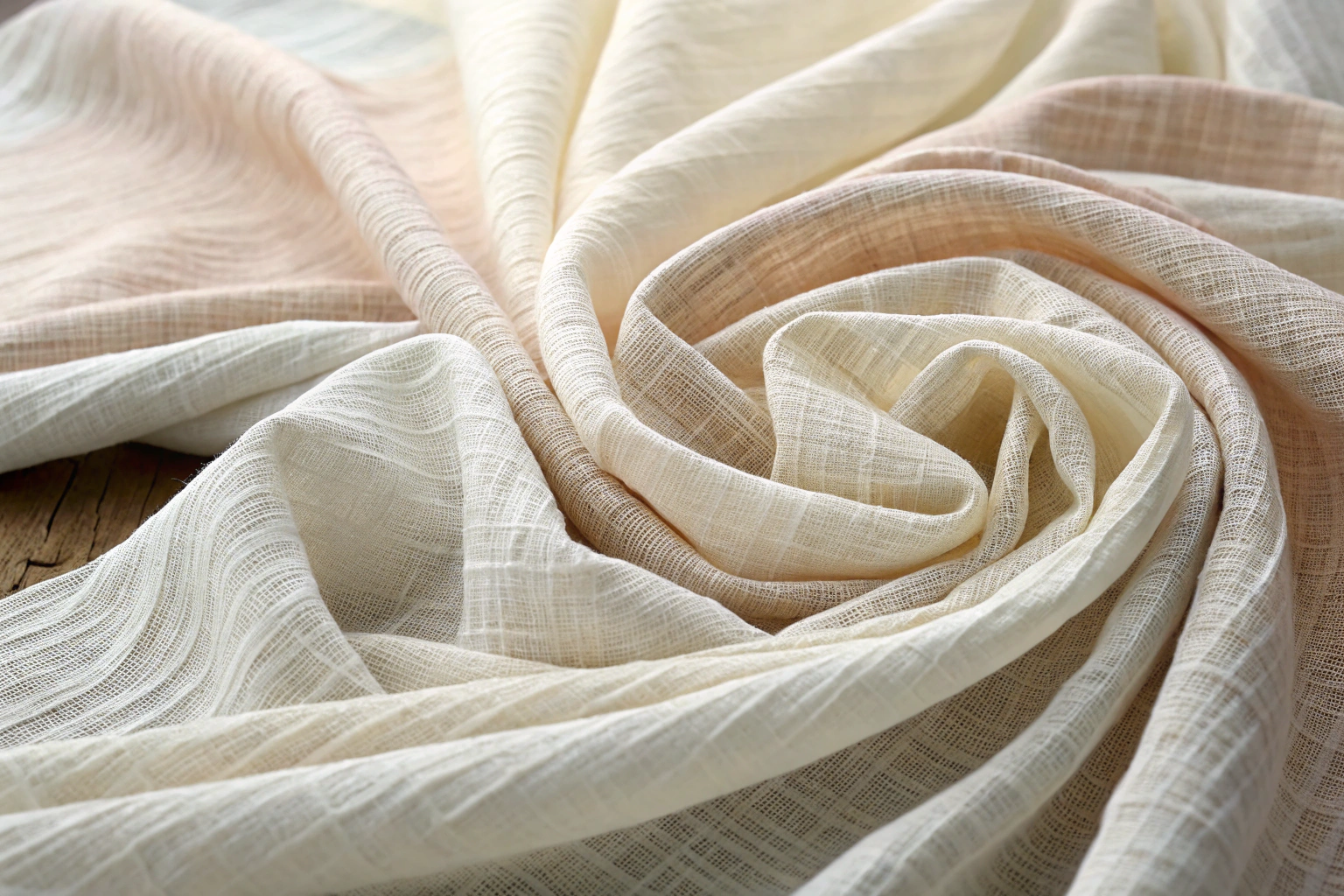Gauze fabric is a lightweight, open-weave textile known for its breathability, softness, and slightly crinkled texture, used in fashion, babywear, and home textiles.

I first used gauze fabric for a summer blouse sample. What I expected to be flimsy turned out soft, breathable, and visually unique. Since then, gauze has become a staple in our warm-weather lines. Knowing what makes gauze different helps you use it better—whether in baby wraps, dresses, or breathable loungewear.
What is gauze fabric made of?
Gauze fabric is typically made from cotton, though it can also be made from viscose, bamboo, or polyester, and is known for its loose, airy weave.
The weave is what defines gauze. It uses fine yarns spaced loosely, making the fabric light and breathable. Cotton is the most common, especially in double or triple layers (double gauze, triple gauze). These layers are stitched together invisibly to add softness and opacity without adding weight.
We’ve used bamboo gauze for babywear and viscose gauze in scarves. Each fiber brings a different feel—cotton is dry and soft, bamboo is silky, and viscose has more drape.
What is double gauze and how is it different?
Double gauze is made by stitching two thin layers of gauze together, offering more coverage and structure while maintaining softness and breathability.
I remember when we first sampled double gauze for a client’s maternity line. It was soft, airy, and gentle on skin—but also thick enough to wear confidently. It doesn’t need lining, and it gets softer after each wash. That makes it a top choice for baby products, loungewear, and light summer shirts.
Double gauze often has a slightly puckered or crinkled look, which hides wrinkles and gives that effortless texture. It’s ideal for those who want low-maintenance natural fabric with some structure.
What are the benefits of gauze fabric?
Gauze fabric is breathable, lightweight, quick-drying, absorbent, and becomes softer with every wash, making it ideal for warm climates and sensitive skin.
I always recommend gauze for clients needing airy fabrics for summer drops. It doesn’t cling to the skin, dries quickly, and handles humidity well. We’ve used it for kimono tops, spa robes, and muslin baby blankets—all with great customer feedback.
It’s also great for dyeing. Colors come out soft and muted, giving a relaxed, organic finish. The texture makes it forgiving, even when wrinkled.
What can gauze fabric be used for?
Gauze fabric is used in dresses, shirts, scarves, baby blankets, burp cloths, robes, wraps, curtains, and spa wear due to its softness and breathability.
At Yoplook, we’ve used gauze in multiple collections. In our women’s wear line, it works great for oversized tunics and boho-style dresses. For babywear, clients love it for swaddles and bibs. And we’ve even supplied gauze robes to wellness brands in Japan.
Here’s a quick overview:
| Application | Why Gauze Works |
|---|---|
| Babywear | Hypoallergenic, soft, easy to wash |
| Summer apparel | Light, breathable, textured look |
| Scarves | Soft, airy, drapes well |
| Spa robes | Absorbent, quick-drying |
| Home textiles | Lightweight curtains, swaddle cloths |
It’s also an excellent eco-friendly fabric option—especially when made from organic cotton or bamboo.
What are the drawbacks of gauze fabric?
Gauze fabric can shrink, wrinkle easily, and lose shape if stretched, requiring careful handling during washing, cutting, and sewing.
We always prewash gauze before cutting in production. It shrinks—especially cotton gauze—and can misalign during stitching. It also frays at raw edges. When designing, you need to use French seams or clean finishes to avoid unraveling.
While the crinkled texture hides wrinkles, it also means you should never iron gauze flat—it loses that soft wave. Instead, steam it gently if needed, or let it air dry crumpled for that natural texture.
How do you care for gauze fabric?
Gauze fabric should be washed in cold or warm water on a gentle cycle, tumble dried on low or air-dried, and never ironed flat to maintain texture.
Always check if the gauze is prewashed. If not, expect 5–10% shrinkage. I usually suggest air drying or tumble dry low with minimal agitation. Avoid bleach and fabric softeners—they weaken the fibers.
Once you know how gauze behaves, it becomes one of the easiest fabrics to maintain and wear.
Conclusion
Gauze fabric combines softness, breathability, and style—perfect for warm-weather comfort, delicate skin, and relaxed, textured fashion.

